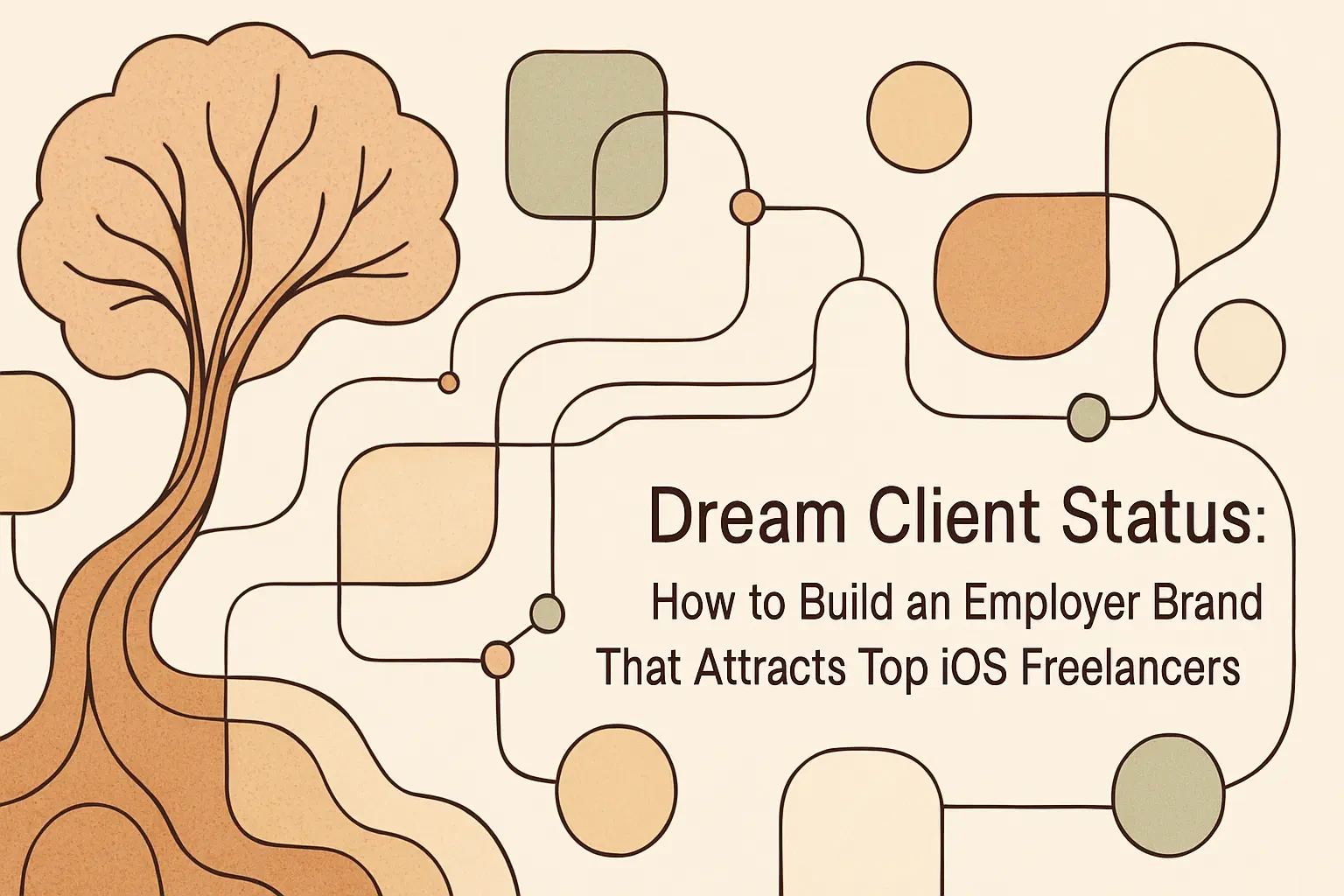Dream Client Status: How to Build an Employer Brand That Attracts Top iOS Freelancers

Dream Client Status: How to Build an Employer Brand That Attracts Top iOS Freelancers
What is Employer Branding (and Why It Matters for Freelancers)?
Your Reputation as a Client Partner
The Power of Word-of-Mouth in the Tech Community
The Pillars of a Strong 'Dream Client' Brand
Clear Communication and Well-Defined Scopes
Respect for Expertise and Autonomy
Prompt and Fair Compensation
A Collaborative and Appreciative Attitude
Actionable Steps to Build Your Client Brand
Tell Your Story: Share Your Values and Culture
Leverage Your Online Presence
Gather and Showcase Testimonials
Contribute to the Community
The Payoff: Becoming a Magnet for A-List Talent
Reducing Time-to-Hire
Attracting Passive Candidates
Building a Long-Term Talent Pipeline
References
Dream Client Status: How to Build an Employer Brand That Attracts Top iOS Freelancers
What is Employer Branding (and Why It Matters for Freelancers)?
Your Reputation as a Client Partner
The Power of Word-of-Mouth in the Tech Community
The Pillars of a Strong 'Dream Client' Brand
Clear Communication and Well-Defined Scopes
Respect for Expertise and Autonomy
Prompt and Fair Compensation
A Collaborative and Appreciative Attitude
Actionable Steps to Build Your Client Brand
Tell Your Story: Share Your Values and Culture
Leverage Your Online Presence
Gather and Showcase Testimonials
Contribute to the Community
The Payoff: Becoming a Magnet for A-List Talent
Reducing Time-to-Hire
Attracting Passive Candidates
Building a Long-Term Talent Pipeline
References
Posted Jul 6, 2025
In a competitive market, your reputation is everything. Learn how to build a powerful employer brand to attract and retain the best freelance iOS developers.








